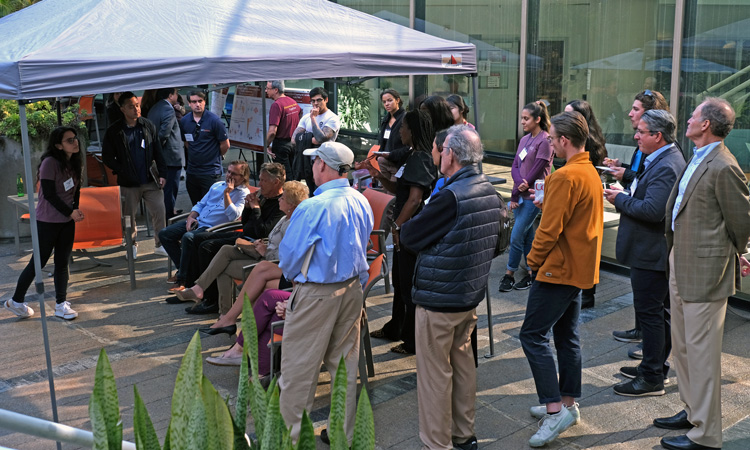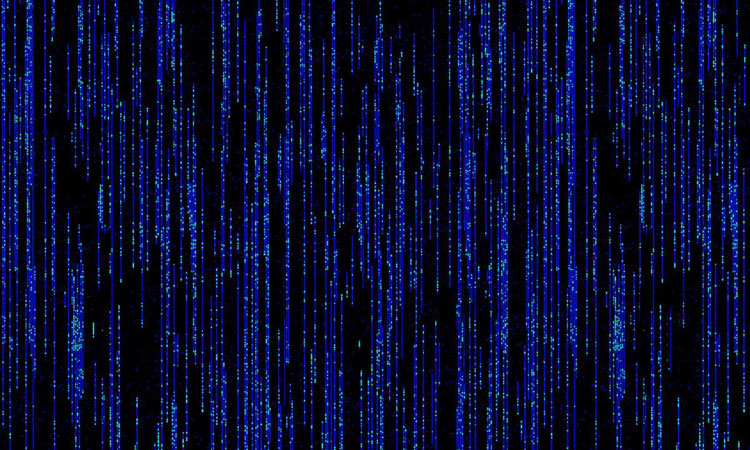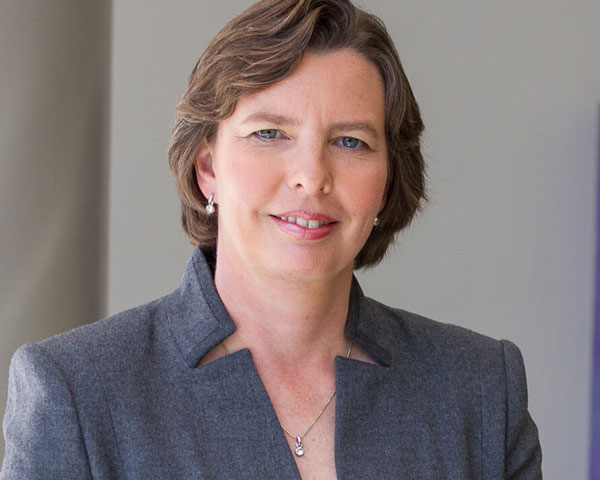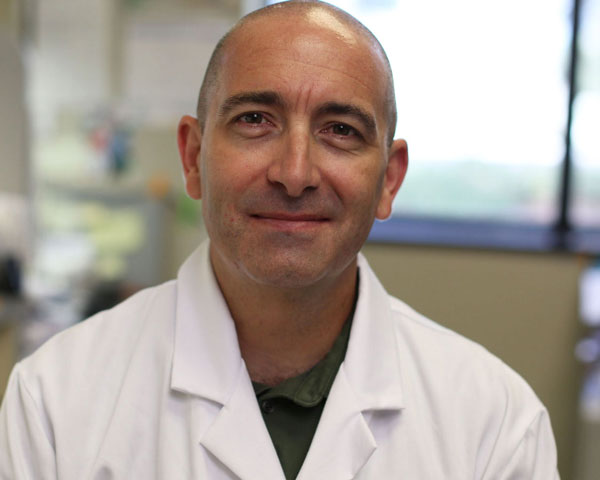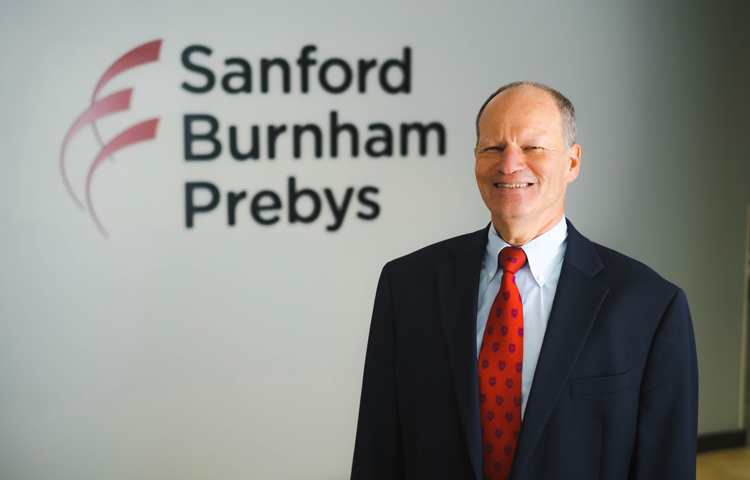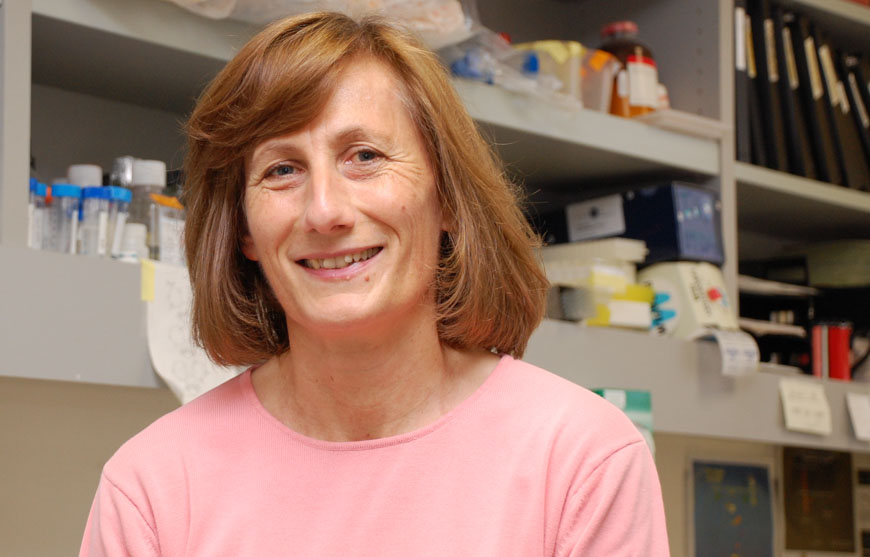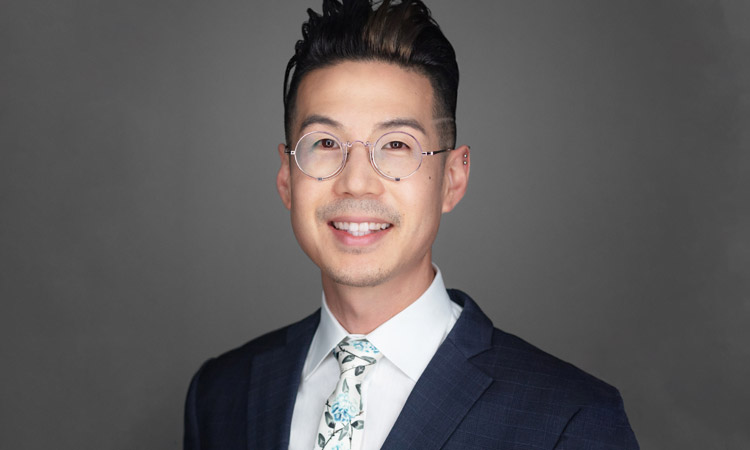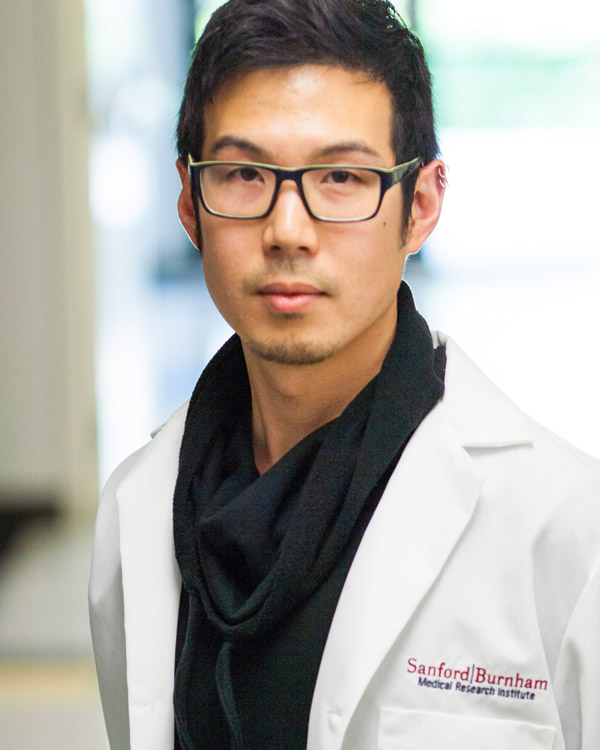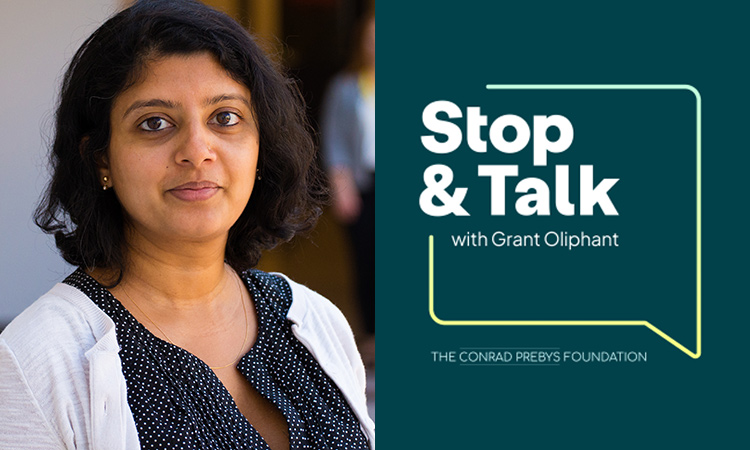Cancer Center open house welcomes San Diego community to learn the latest about melanoma research
The Institute’s NCI-designated Cancer Center hosted the open house on Wednesday, March 20. It provided an opportunity for community members to meet scientists who seek to better understand melanoma and use this knowledge to improve treatment and prevention.
The event was sponsored by the center’s Community Advisory Board, an eight-member committee that focuses on advocacy, education and community engagement, as well as providing Cancer Center leaders and members with the perspectives of patients, survivors and their loved ones.
Open house participants could select from a variety of activities. Two labs provided brief poster presentations.
Ze’ev Ronai, PhD, director of the Sanford Burnham Prebys Cancer Center and the Jeanne and Gary Herberger Leadership Chair in Cancer Research, and his team discussed several areas of research, including the dissection of microbiota commensals which support the immune system’s fight against melanoma, the studies undertaken to understand melanoma addiction to the metabolic enzyme GCDH, and the development of new drugs to target the molecular machine that translates genetic instructions into proteins, which are known to be hyperactive in cancer cells.
Linda Bradley, PhD, professor in the Cancer Metabolism and Microenvironment Program at Sanford Burnham Prebys, and her group detailed their work on improving the immune system response to viral infections and cancer, including a new potential immune checkpoint therapy and efforts to rejuvenate overstressed immune cells to enhance the effectiveness of immunotherapy.
Attendees also could take tours of two different research facilities. Many participants enjoyed an insider’s view into the field of cryo-electron microscopy (cryo-EM), a technology that garnered three key innovators the 2017 Nobel Prize in Chemistry. The Cryo-EM core facility enables scientists to create 3D images of the cell and all its constituent parts that are accurate to the tiniest detail as it is able to capture individual atoms. Images taken using cryo-EM can be organized sequentially to develop films that show in real time how the cell’s many actors interact, helping scientists map interactions between drugs identified at Sanford Burnham Prebys and their target proteins, thereby advancing novel modalities for the treatment of melanoma and other cancers.
The second tour brought community members to the Conrad Prebys Center for Chemical Genomics. The Prebys Center is the Institute’s comprehensive center for drug discovery and chemical biology. Visitors were able to see the center’s state-of-the-art robots that enable researchers to quickly test the potential effectiveness of hundreds of thousands of compounds to find new prospective treatments. Many scientists at Sanford Burnham Prebys partner with the Prebys Center to conduct drug discovery searches based on new research findings, including those studying melanoma and other cancers.
Many of the visitors had the opportunity to visit a melanoma research laboratory to learn about research projects in the Ronai lab and view melanoma cells as seen under the microscope.
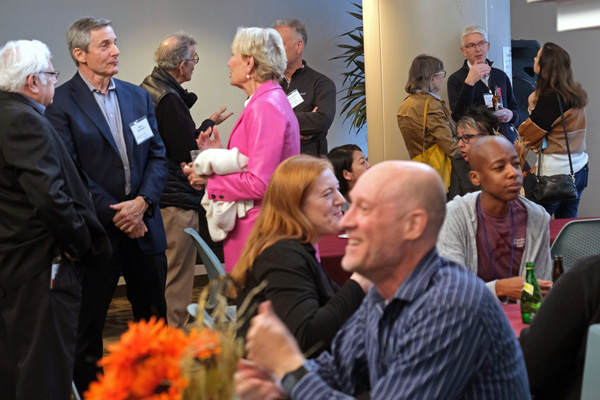
Following the tours, Ronai shared an overview of the Cancer Center and highlighted recent accomplishments. Attendees interacted with Gregory Daniels, MD, PhD, a medical oncologist and melanoma expert from University of California San Diego and Steven Silverstein, a melanoma survivor, former president of the Melanoma Research Foundation and a melanoma research advocate. The open house concluded with an opportunity for guests to speak with cancer scientists and featured speakers during the evening reception.
“We were honored to provide our valued guests with the opportunity to learn about the research conducted at our Cancer Center, including ongoing melanoma research,” says Ronai. “Our open houses, which focus on different unmet needs in cancer, allow us to welcome and engage with the San Diego community, to share our findings and be inspired by patients and their loved ones.”
